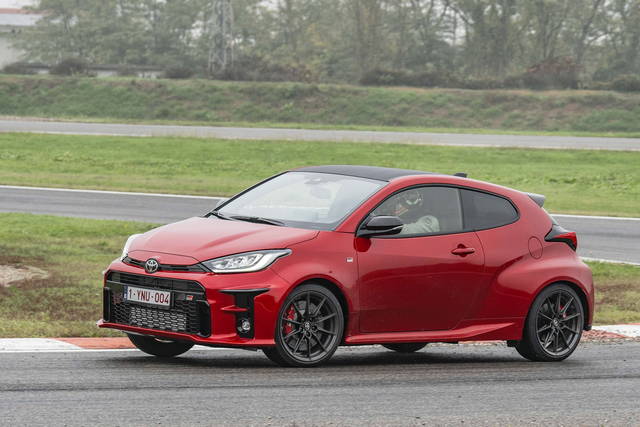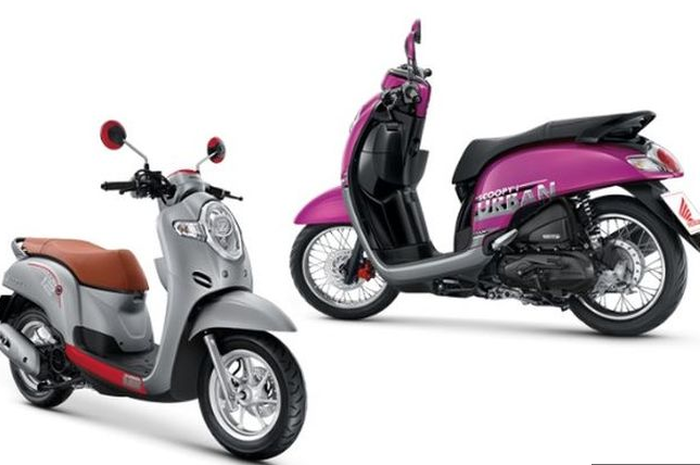Rally scent
Small, powerful, with all-wheel drive and with an enlarged body, the Toyota Yaris in version GR (from Gazoo Racing, the sports department of the Japanese company) dusts off a kind of car that has been a little neglected in recent years: that of sports cars that recall rallies. And it is no coincidence, because the Rising Sun brand is at the top of the WRC (World Rally Championship) driver classification with Elfyn Evans, and second in the constructors’ one with the Yaris (albeit profoundly modified compared to the series). At the end of the season there is only one race left: the Monza Rally on 6 December.
For enthusiasts
The Toyota Yaris 1.6 Turbo GR Circuit 4WD of the test is a small “bomb” for driving enthusiasts, powered by a 1.6 turbo with 261 HP: a record power for a three-cylinder developed for a production model. The gearbox is six-speed manual while the four-wheel drive system includes an electronically controlled clutch as a central transfer case and two Torsen differentials, one at the front and the other at the rear; thanks to them, if one of the wheels starts to slip the drive torque is transferred to the other, which has more grip. The distribution of traction between the two axles changes according to the driving mode chosen with the knob in the console: in Normal 60% of the torque is transmitted to the front and the remaining 40% to the rear. In Sport, the rear is privileged, which reaches 70% of the power, while in Track (track) the percentages go to 50/50.
As for the suspensions of the Toyota Yaris 1.6 Turbo GR Circuit 4WD, the front remains of the McPherson type (the spring-shock absorber group performs both the load-bearing function and the damping function) as for the other versions, while the rear axle is of the multi-arm type (in the simpler version with two and a half levers per wheel, taken from the Toyota Corolla). It is a necessary choice, because the torsion beam of the other Yaris would not find a place given the size of the four-wheel drive, but this type of suspension favors a more precise control of wheel movements. The brakes are worthy of the exuberant performance: the front calipers with four pumping elements bite slotted discs (grooves on the pad support surface facilitate the disposal of dirt) with a diameter of 356 mm; 297 mm those behind, with two-piston calipers.
Two doors less
Of the bodywork of the Toyota Yaris “Normal” remained headlights, lights and little more. Everything else is redesigned specifically for the GR. The first difference concerns the number of doors: this is the only one to have three (including the tailgate) instead of five. The dimensions also change: with 400 cm the GR is longer than 6; moreover, it is also wider thanks to the showy rounded fenders and 4 cm lower. The pace remains unchanged. The bumpers are specific, designed to add downforce (the force of the air that crushes the car’s ground, improving road holding) and improve the cooling of the mechanics. The roof (with a specific shape, more descending towards the tail) is in carbon fiber: it saves 3.5 kg compared to the steel one. Also to limit weight, the hood, tailgate and doors (which are frameless for the windows, as in sports coupes) are made of aluminum alloy.
Behind it is tight
The bucket seat that is also adjustable in height, but without the adjustment of the lumbar and thigh supports, in addition to the specific steering wheel and the wide aluminum pedals with non-slip rubber pads, distinguish the driving position of this racing Yaris from those of the more peaceful “sisters” . It also specifies the analogue instrumentation, with its traditional appearance, clear and rich in information: among other things, it indicates in real time the distribution of the drive torque between the two axles. The rest does not change, including the overly simplified finishes for a car of this price, but in line with its “racing” spirit. The driving position of the Toyota Yaris GR rather high for a sports car it is comfortable, but the lowered roof and the intrusive 8 ”cantilever screen on the dashboard reduce the view forward to the right. Later, then, the shape of the rear window reduces it to a minimum. The tapered shape of the rear of the car leaves little space for the two passengers behind (unlike the other versions this one is approved for four people only): those who are 170 cm tall already touch the ceiling with their heads. Small, then, the trunk: thanks to the battery under the bottom, the seating capacity on the sofa is just 140 liters, against the 288 of the other Toyota Yaris.
What traction!
Enhanced effectively and realistically by the sound coming from the speakers, the rumble of the 1.6 turbo of the Toyota Yaris GR it is powerful and pleasant: the classic “whipping” of the three cylinders is only felt at times. The response delay of the turbo is limited, and from mid-range upwards the thrust becomes even more decisive (the 261 horses can all be heard), only to fade after 6500 rpm (the red zone of the rev counter is at 7000). The gearbox, easily maneuverable, with well-guided insertions, a short stroke for the lever and the clutch not too heavy to press, and the steering too: precise, direct just enough to brush the curves and not excessively. heavy in the load of the power assistance. In the track test with the Track mode on, the insertions into the curves are very fast, even with a certain roll that we would not have expected from a sports car with such a decisive character and, when exiting, the four-wheel drive give a lot of traction, car that remains balanced and easy to manage.
The brakes of the Toyota Yaris GR, and for the more savvy there is even a specific function that disconnects the rear differential when the handbrake lever is pulled, to perform decisive drifting. Later, on hilly roads open to traffic, they appreciated the Sport mode, which transmits more torque to the rear wheels making driving neutral, with minimal understeer, and so intuitive that it makes no wish to switch to Normal. That slight roll seen on the track, but less noticeable on the road, is due to the suspension setting that is not exasperatingly rigid: good comfort is guaranteed for such a sporty car, with no regrets in terms of handling and with the further advantage of limiting hopping on the bumpy that would worsen the grip. On such a car, consumption is of very relative importance. But the approximately 10 km / l indicated by the on-board computer at the end of the road test, conducted without paying attention to fuel economy, are more than a curiosity: they testify to the good overall efficiency of the mechanics.
Just one
The Toyota Yaris 1.6 Turbo GR Circuit 4WD is already on sale in a single setting at 39,900 euros. It offers practically everything as standard: full LED headlights, multimedia system with Android Auto, Apple Car Play and navigator, rear view camera and a complete set of driving aids, including adaptive cruise control and lane maintenance.
In our opinion
Benefits
> Guide. He knows how to excite even without requiring too much effort from the driver.
> Engine. He pushes decisively and with a nice “sound”.
> Suspensions. Their calibration is designed to give agility, but without being too hard.
Defects
> Baule. The capacity is really small.
> Rear seats. The sofa is not very wide and those who are 170 cm tall already touch the ceiling with their heads.
> Visibility. At the rear it is limited by the steeply sloping rear window, at the front by the dashboard monitor and the low roof.
–


